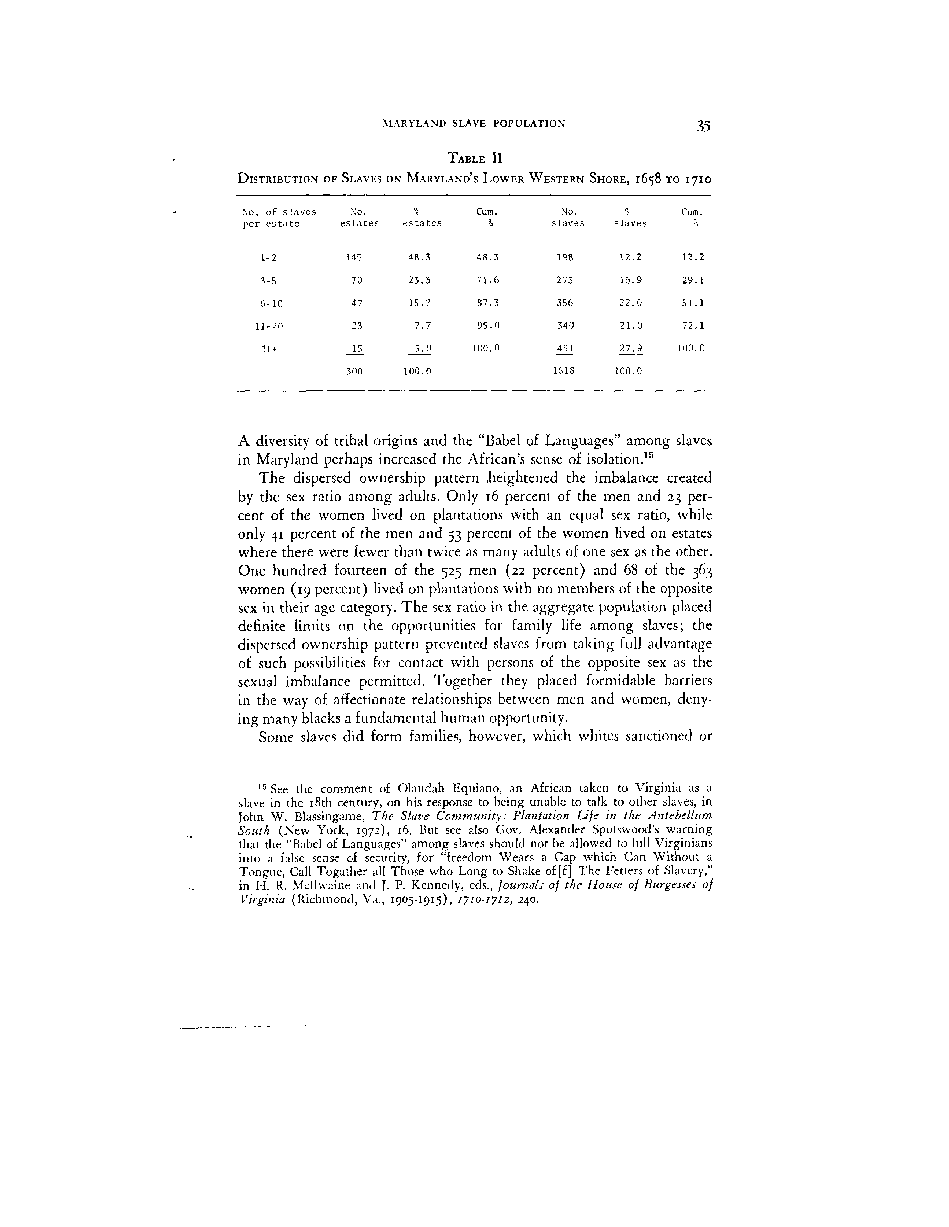|
MARYLAND SLAVE POPULATION 35
TABLE II
DISTRIBUTION OF SLAVES ON MARYLAND'S LOWER WESTERN SHORE, 1658 TO 1710
No. of slaves No. %
Cum.
No.
»,
Cum.
per estate
estates
estates %
slaves
slaves %
1-2
145
48.
J 48.3
198
12.
2
12.2
3-5
70
23.
3 71.6
273
16.
9
29.1
6-10
47
15.
.7 87.3
356
22.
0
51.1
11-20
23
7.
7 95.0
340
21.
0
72.1
21*
15
5.
0 100.0
451
27.
9
100.0
300
100.
0
1618
100.
0
A diversity of tribal origins and the "Babel of Languages" among slaves
in Maryland perhaps increased the African's sense of isolation.15
The dispersed ownership pattern heightened the imbalance created
by the sex ratio among adults. Only 16 percent of the men and 23 per-
cent of the women lived on plantations with an equal sex ratio, while
only 41 percent of the men and 53 percent of the women lived on estates
where there were fewer than twice as many adults of one sex as the other.
One hundred fourteen of the 525 men (22 percent) and 68 of the 363
women (19 percent) lived on plantations with no members of the opposite
sex in their age category. The sex ratio in the aggregate population placed
definite limits on the opportunities for family life among slaves; the
dispersed ownership pattern prevented slaves from taking full advantage
of such possibilities for contact with persons of the opposite sex as the
sexual imbalance permitted. Together they placed formidable barriers
in the way of affectionate relationships between men and women, deny-
ing many blacks a fundamental human opportunity.
Some slaves did form families, however, which whites sanctioned or
15 See the comment of Olaudah Equiano, an African taken to Virginia as a
slave in the i8th century, on his response to being unable to talk to other slaves, in
John W. Blassingame, The Slave Community: Plantation Life in the Antebellum
South (New York, 1972), 16. But see also Gov. Alexander Spotswood's warning
that the "Babel of Languages" among slaves should not be allowed to lull Virginians
into a false sense of security, for "freedom Wears a Cap which Can Without a
Tongue, Call Togather all Those who Long to Shake of [f] The Fetters of Slavery,"
in H. R. Mcllwaine and J. P. Kennedy, eds., Journals of the House of Burgesses of
Virginia (Richmond, Va., 1905-1915), 1710-1712, 240.
�
|

